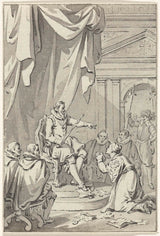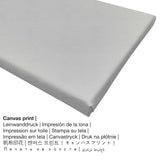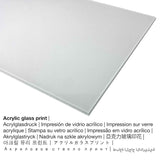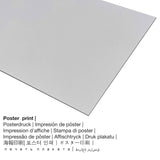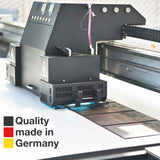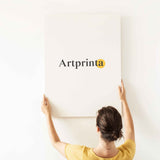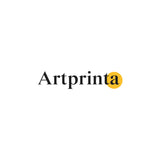Jacobus Buys, 1778 - Amụma na ntinye nke akara nke iri; - ọmarịcha nka
Ụtụ gụnyere. Mbupu gbakọrọ na ndenye ọpụpụ.
Original artwork specifications as provided by the museum's website (© - Rijksmuseum - www.rijksmuseum.nl)
Alva claims the Tenth Penny, 1571. The Duke of Alva sitting on his throne to his knees begging the Dutch Virgin. On the ground, tore Bible and privileges. Design for print.
Ozi ndabere na nka nka izizi
| Iberibe aha nka: | "Allegory on the introduction of the tenth token;" |
| nhazi ọkwa: | sere |
| Otu sara mbara: | nka ochie |
| oge: | 18th narị afọ |
| Emepụtara n'afọ: | 1778 |
| Afọ nka: | ihe karịrị 240 afọ |
| Ụlọ ihe ngosi nka: | Rijksmuseum |
| Ebe ngosi nka: | Amsterdam, Netherlands |
| Weebụsaịtị ihe ngosi nka: | Rijksmuseum |
| Ikikere nke ihe osise: | ngalaba ọha |
| Site n'aka: | Rijksmuseum |
Onye na-ese ihe
| Ihe nkiri: | Jacobus zụrụ |
| Aha ndị ọzọ: | Buys, J. Buys, Buys Jacob, Buys Jacobus, Buijs Jacobus, J. Buis, B[uys], Jacobus Buys, Jacob Buys |
| okike onye nka: | nwoke |
| Obodo onye nka: | Dutch |
| Ọrụ: | onye na-ese ihe |
| Obodo obibi: | mba netherland |
| Otu nka: | nna ukwu ochie |
| Ụdị nke onye na-ese ihe: | Rococo |
| Ndụ: | 77 afọ |
| Afọ amụrụ: | 1724 |
| Amụrụ na (ebe): | Amsterdam, North Holland, Netherlands |
| Afọ nwụrụ: | 1801 |
| Obodo ọnwụ: | Amsterdam, North Holland, Netherlands |
Ngwaahịa a
| Bipụta ụdị ngwaahịa: | nka nka |
| Usoro mmeputakwa: | dijitalụ mmeputakwa |
| Usoro mmepụta: | Mbipụta UV ozugbo (mbipụta dijitalụ) |
| Mmalite nke ngwaahịa a: | emepụtara na Germany |
| Stockdị ngwaahịa: | a na-achọ |
| Eji ngwaahịa emebere: | mgbidi gallery, mgbidi mgbidi |
| Ntuziaka onyonyo: | usoro eserese |
| Njikwa oyiyi: | ( Ogologo: obosara) 2: 3 |
| Nkọwa nke oke ihe onyonyo: | ogologo bụ 33% mkpụmkpụ karịa obosara |
| Materials: | mbipụta akwụkwọ mmado (akwụkwọ kwaaji), mbipụta kanvas, mbipụta enyo acrylic (nwere ezigbo mkpuchi iko), mbipụta ọla (aluminium dibbond) |
| Nhọrọ nha nha mbipụta kanvas (akwa akwa na etiti ihe ndọtị): | 20x30cm - 8x12", 40x60cm - 16x24", 60x90cm - 24x35", 80x120cm - 31x47", 100x150cm - 39x59" |
| Mbipụta iko acrylic (nke nwere ezigbo mkpuchi iko): | 20x30cm - 8x12", 40x60cm - 16x24", 60x90cm - 24x35", 80x120cm - 31x47", 100x150cm - 39x59" |
| Mpempe akwụkwọ mmado (akwụkwọ kwaaji) nha dị iche iche: | 40x60cm - 16x24", 60x90cm - 24x35", 80x120cm - 31x47" |
| Mpempe akwụkwọ Dibony (ihe alumnium) nha: | 20x30cm - 8x12", 40x60cm - 16x24", 60x90cm - 24x35", 80x120cm - 31x47" |
| Nhazi mmeputa nka nka: | agunyeghi |
Ngwa ngwaahịa dị
Maka ngwaahịa ọ bụla anyị na-enye ihe dị iche iche na nha. Họrọ n'ime nhọrọ ngwaahịa ndị a ugbu a ka ị kwekọọ na mmasị gị na nha na akụrụngwa:
- Mbipụta akwụkwọ mmado (ihe kwaaji): A poster print is a UV printed flat cotton canvas paper with a granular structure on the surface. It is excellently qualified for framing the art replica with a personal frame. Please bear in mind, that depending on the absolute size of the poster we add a white margin of something between 2-6cm round about the artwork in order to facilitate the framing with your custom frame.
- Mbipụta kanvas: The printed canvas stretched on a wooden stretcher frame. A canvas has a exclusive effect of three-dimensionality. In addition to that, a canvas generates a attractive and pleasing atmosphere. A canvas print of this work of art will allow you to transform your own into a large artpiece like you know from galleries. A canvas print has the advantage of being low in weight, which implies that it is quite simple to hang up the Canvas print without additional wall-mounts. A canvas print is suitable for all types of walls.
- Mbipụta enyo acrylic: An acrylic glass print, often referred to as a plexiglass print, makes the artwork into marvellous wall décor. Additionally, it forms a good alternative to canvas or dibond fine art prints. The artwork is made with the help of state-of-the-art UV printing technology.
- Mbipụta aluminom (aluminium dibbond): This is a metal print manufactured on aluminium dibond material with a true depth. Its non-reflective surface make a modern impression. For the Direct Print On Aluminum Dibond, we print your chosen artpiece right onto the aluminium composite white-primed surface. The white & bright parts of the work of art shimmer with a silk gloss, however without any glare. The colors are luminous, details of the print are crisp and clear.
Nke a kariri 240 year-old masterpiece was painted by Jacobus Buys. This artpiece can be viewed in in the Rijksmuseum's nchịkọta dijitalụ, nke bụ ihe ngosi nka kacha ukwuu maka nka na akụkọ Dutch site na Middle Ages ruo ugbu a. Site n'ikike nke: Rijksmuseum (public domain license).Besides, the work of art has the creditline: . In addition to that, the alignment is in Eserese format ma nwee oke nke 2: 3, nke pụtara na ogologo bụ 33% mkpụmkpụ karịa obosara. Jacobus Buys was a male painter, whose style was primarily Rococo. The European artist was born in the year 1724 na Amsterdam, North Holland, Netherlands na nwụrụ na afọ nke 77 n'afọ 1801.
Ihe dị mkpa: We try whatever we can in order to depict our products as accurately as it is possible and to display them visually. At the same time, the tone of the print products, as well as the imprint may diverge somehwat from the representation on the screen. Depending on your screen settings and the condition of the surface, color pigments can unfortunately not be printed as realistically as the digital version on this website. Because all our fine art prints are processed and printed manually, there might as well be minor differences in the motif's size and exact position.
Nwebiisinka © - Artprinta.com

